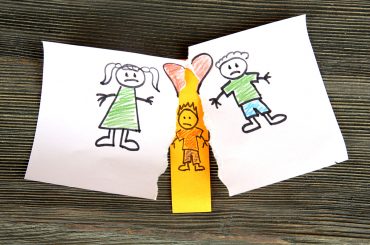Earlier this month the government launched for public consultation the long-awaited brief on reform of Family Court and – more importantly – the post parental-separation custody arrangement for children.
The positive news is that the government has accepted the validity of shared parenting, which is technically known as Joint Physical Custody (JPC) among scientists, an arrangement in which children spend equal or near-equal time with the mother and father after separation. All studies in the past two or three decades have shown that this is the best arrangement for children’s development for as long as parenting by each parent is qualitative. You can learn more about the science of shared parenting in one of the most extensive reviews of the science of JPC ever compiled or written – a report I published last year.

JPC is defined by the least-involved parent having at least 35 percent of the care time, including overnight care, although scientists call for care time as equally divided as possible.
The legal regime of JPC is usually based on a concept known as the legal presumption: that the care arrangement for children after separation would by default be JPC, and courts would only deviate from that default if there are so-called rebuttable reasons – objective reasons for deviating from JPC. Rebuttable reasons could be something as simple as one of the parents not wanting to be involved in substantial parenting, or as complex as one of the parents being abusive or somehow unsuited to be an equally-involved parent.
Once the legal presumption is adopted in law, the rest is easy. Those parents who are willing and able to forge a JPC parenting plan would share all costs and responsibilities; all others would simply fall back onto the present regime – the child living with the parent willing or most able, and the other parent having visitation rights (the amount dependent on circumstances of each case) as well as an obligation to pay child maintenance.
So far so good, but then the government’s proposals start getting complex. The government proposes the setting up of a new body, called the Family Board, whose function would be to facilitate the judicial process. It would do this by assisting the Family Court as well as the mediators.
Mediation service's poor results
The mediation service was set up more than 20 years ago in a bid to get separating parents to either reconcile or forge an amicable agreement without escalation towards full-blown litigation. It is part of the court ecosystem, but nothing that is said during mediation can be eventually used in court – the idea is to make the mediation a less contentious process where the parents can engage more openly and sincerely.
The Chief Justice said at the annual speech during the start of forensic year earlier this month that out of 1,800 requests for separations last year, over half were settled during the mediation process. Yet my research suggests that the overwhelming majority who reach a settlement during the mediation process would be set on, or predisposed towards, reaching an amicable settlement. So we can say that, at best, the mediation process tends to precipitate the settlement for those predisposed for a settlement, and not actually foster a settlement.
He also conceded that the system is susceptible to abuse. My research shows that many parties stultify the mediation process and, even as they delay it, they get interim court decrees on child residence and maintenance. These interim decrees would then become the proverbial facts-on-the-ground, and the mediation would drift into stultification and aimlessness to the detriment of the party who loses out in the interim measures. Eventually the mediator would terminate the process and write to the judge, who would then invite the parties to file a lawsuit within two months.
What happens then serves to show that in fact the mediation service makes the proceedings more bloated, lengthier and more complicated. One complication is that legal applications and hearings that produce interim measures during the mediation process (which create the proverbial facts-on-the-ground mentioned above) do not even become part of the eventual lawsuit. The process and the parties would have to start anew in an eventual lawsuit, creating duplicate work and an inequality (due to the facts-on-the-ground) between the parties that makes things more contentious still.
And now the government’s proposal is to add yet another layer – the Family Board, composed of a lawyer, psychologist and social worker – to assist the mediator. The question and bafflement posit itself: why keep the mediators in the first place if the Family Board can perform a similar function in a more professional, dynamic way?
Multiple layers, greater complexity
The proposals in fact presuppose keeping in place the system of children’s advocates (who are supposed to represent the voice and rights of the child) and mediators, strengthening Agenzija Appog’s Court Services unit, and then on top of that add the Family Board. The problem with all of this is that the process is going to be burdened by the creation of more entities doing overlapping work. And the peril is that all of this would then become a cacophony: multiple bodies at different layers saying varied things and creating more bureaucracy, more paperwork, more contentiousness, more processes, and ultimately more complex litigation.
My point? Keep it lean and streamlined.
I would scrap the mediation service – and narrowly define the role of the children’s advocate to legal representation of children in event of children being one of the parties to the lawsuit – and focus on having effective Family Boards and expanding Agenzija Appogg’s Court Services unit. Instead of getting an advocate, the children can speak to the Family Board if old enough, or analyzed by social workers if too young to articulate their wishes and ideas. In this way, the Family Board would begin by processing and guiding the couple seeking to separate, and Court Services would be the crack team at the service of the court to do things such as investigate the respective households and other things they are already doing such as handling ‘supervised access’ orders of the court.
The function of the Family Board would be to compel the parents to reach an amicable settlement. And if that fails, then the Family Board together with Court Services could prepare a report on the reasons for such failure, the household and parenting situation of each parent, the situation and wishes of the child or children – and that would report would form part of the evidence of the eventual court case. The judge assigned the case can then use the report as a basis or starting point, and be able to take decisions to move the case along in a more expeditious manner.
Donate to Shared Parenting Project
I have compiled the most extensive scientific review of the science of shared parenting ever published. I am also making an impact with articles on the reform process, and parents and children wronged. My work relies on donations. Give me sustenance by donating as little as €5.





